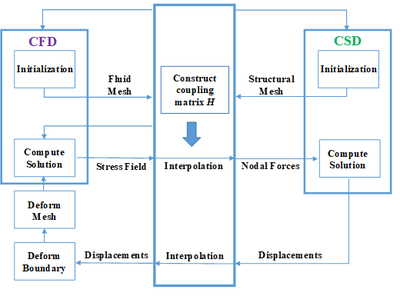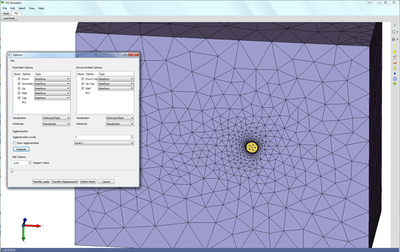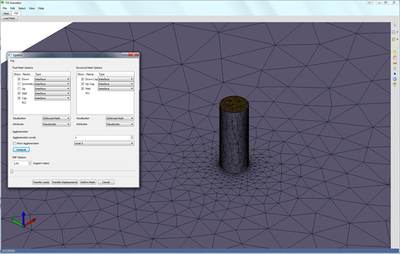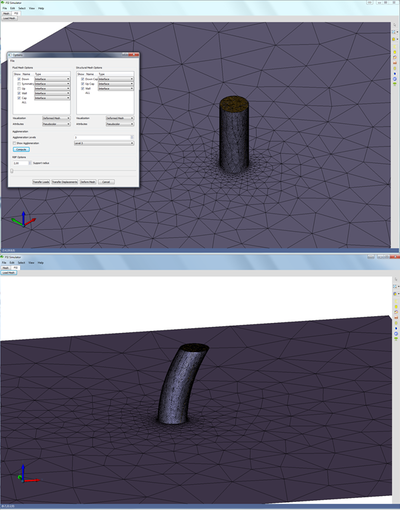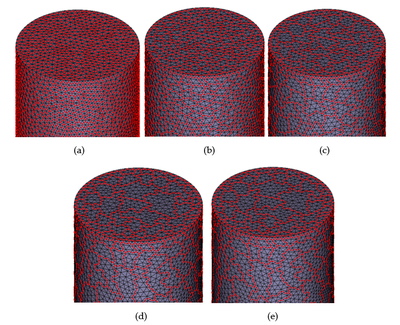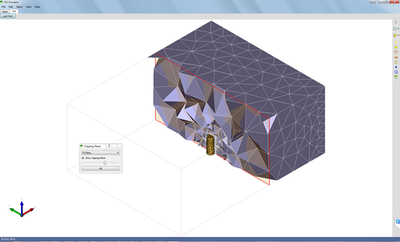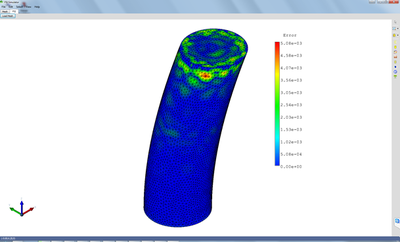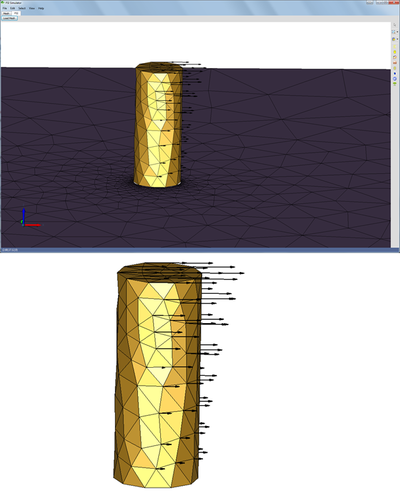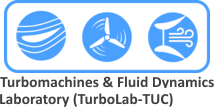FSImulator is a Fluid-Structure Interaction platform that has been developed by members of the Turbomachines & Fluid Dynamics Laboratory (TurboLab-TUC). FSImulator is aiming to facilitate interaction between a CSD (Computational Structural Dynamics) solver and a CFD (Computational Fluid Dynamics) solver. Attention is mainly directed towards the efficient and accurate transfer of predicted displacements, velocities (by CSD) and loads (by CFD). More precisely, spatial coupling is achieved using Radial Basis Functions (RBFs) interpolation, which enables point-based interaction, needing therefore no information for connectivities and, consequently, allowing for the utilization of different type or even intersecting structural and flow grids. Although RBFs method seems to be particularly attractive for both data transfer and mesh deformation, it suffers from a significant drawback: it calls for relatively excessive memory and computation time requirements (in its original formulation). In case of data transfer the Partition of Unity (PoU) approach is adopted as a remedy of the aforementioned deficiency, which regards the decomposition of the examined problem into several smaller ones, to be solved independently and hence more efficiently. In mesh deformation though, improvement of computational performance is succeeded with the surface point reduction technique.
FSImulator has been developed in C++, while it utilizes Qt application framework for the Graphical User Interface (GUI) and OpenCASCADE graphical libraries for the visualization process. Its main features are outlined below:
- A user friendly interface to set up the whole study along with a 3D viewer enabling user’s interaction.
- An integrated environment, allowing for real-time observation of the numerical simulation under examination.
- A data transfer method based on the RBF's PoU approach.
- A mesh deformation method based on the developed RBF's agglomerated interpolation approach.
- Custom Octree data structures based on the OpenCASCADE library functions.
- Integration of Eigen library and use of OpenMP for parallel processing.
- Various visualization properties
- Display modes (shading, wireframe, etc.);
- Initial/ Deformed grids;
- Custom clipping planes;
- Mesh data visualization (Pseudocolor, Vector, etc.);
- Agglomeration edges.
- Ability to import/export mesh data with results;
- Displacements of the structure under study;
- Pressure fields.
- Ability to import/export mesh data in various formats;
- Ansys CFX format (.cfx5);
- I-DEAS universal file format (.unv);
- STereoLithography file format (.stl).
Special attention was given to the efficiency improvement of the viewer, in order to handle large-scale test cases, involving grids with millions or tens of millions nodes. Therefore, custom data structures, based on grid mapping, were constructed, while only the boundary faces of the elements are visualized by the GUI application.
The current version of this package is capable only for spatial coupling of the solvers (structural and flow) and mesh deformation; however, its potential to encounter a whole FSI simulation, including pre- and post-processing, is indicated. Considering this final goal, various tools have been developed for visualization enhancement of the code, while the GUI is formulated in such a way to enable further capabilities to define the initial and boundary conditions for the solvers.
The coupling process relies on .txt files, including data to be exchanged between the solvers. Thus, the predicted by the flow solver force field is imported to the interfacing software and interpolated to the structural grid according to the RBF's PoU method, while a similar process is followed for the interpolation of the predicted by the structural solver displacements to the flow grid. The deformation of the mesh is obtained with the RBF's agglomerated interpolation methodology and a new CFD simulation begins.
References:
G.A. Strofylas, G.N. Lygidakis, I.K. Nikolos, "Accelerating RBF-based mesh deformation by implementing an agglomeration strategy", Proceedings of the ASME 2015 International Mechanical Engineering Conference & Exposition, IMECE2015, Nov. 13-19, Houston, Texas, USA, Paper No. IMECE2015-50902. https://doi.org/10.1115/IMECE2015-50902
G.A. Strofylas, G.I. Mazanakis, S.S. Sarakinos, G.N. Lygidakis, I.K. Nikolos, "Using improved Radial Basis Functions methods for fluid-structure coupling and mesh deformation", in M. Papadrakakis, V. Papadopoulos, G. Stefanou, V. Plevris (Eds.), Proceedings of the ECCOMAS Congress 2016, VII European Congress on Computational Methods in Applied Science and Engineering, Crete Island, Greece, 5-10 June, 2016. DOI: 10.7712/100016.1905.9110
G.A. Strofylas, G.I. Mazanakis, S.S. Sarakinos, G.N. Lygidakis, I.K. Nikolos, "On the use of improved Radial Basis Functions methods in Fluid-Structure Interaction simulations", Proceedings of the ASME 2016 International Mechanical Engineering Conference & Exposition, IMECE2016, Nov. 11-17, Phoenix, Arizona, USA, Paper No. IMECE2016-66412. https://doi.org/10.1115/IMECE2016-66412
G.A. Strofylas, G.N. Lygidakis, I.K. Nikolos, "An Agglomeration Strategy for Accelerating RBF-Based Mesh Deformation", Advances in Engineering Software, 107, pp. 13-37, 2017. https://doi.org/10.1016/j.advengsoft.2017.02.004
G.A. Strofylas, Development of computational tools, based on Radial Basis Functions and Differential Evolution, for the parametric design of aeroelastic systems, Ph.D. Thesis, School of Production Engineering & Management, Technical University of Crete, 26/4/2021.
Numerical Applications and Simulations
